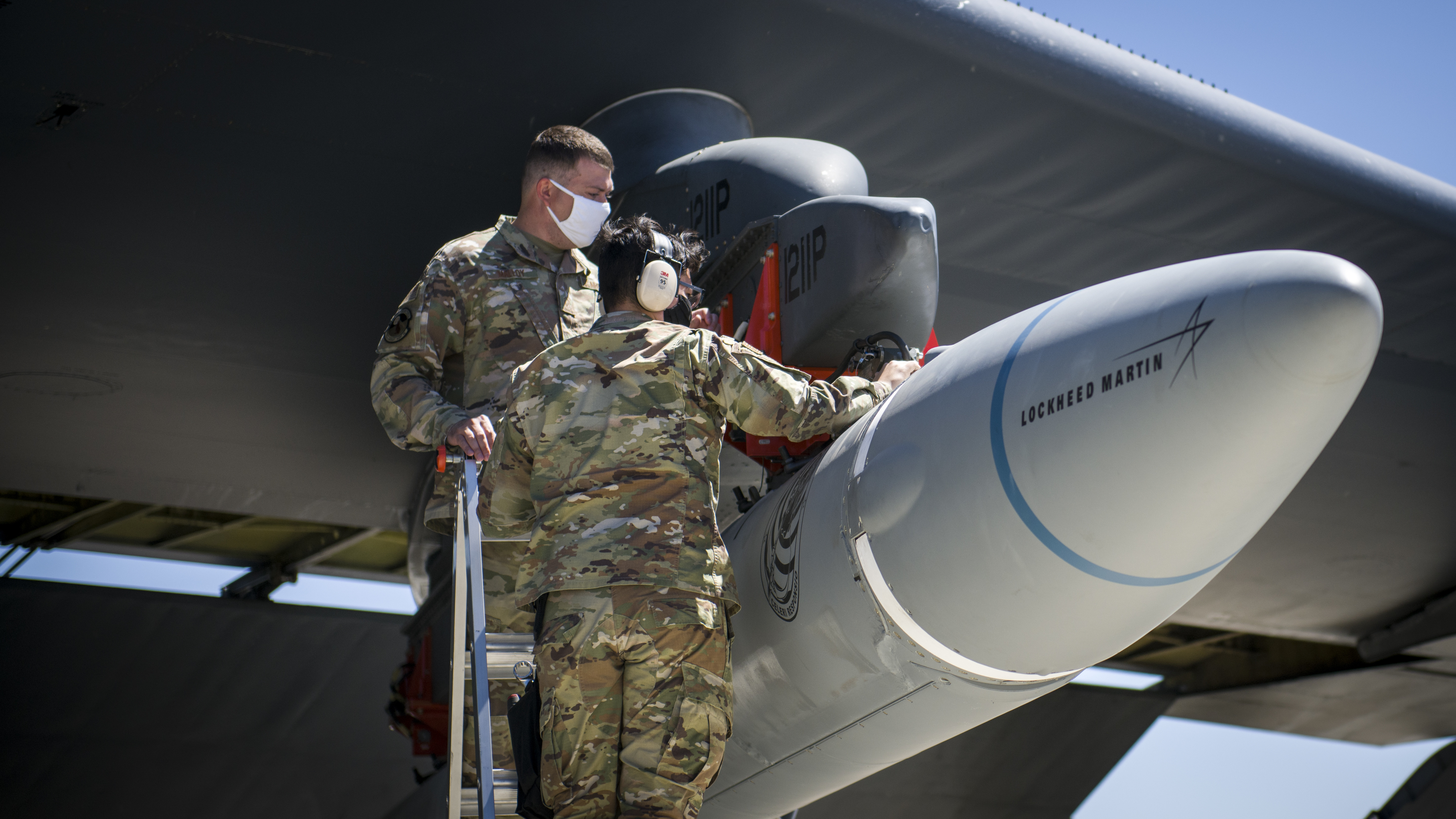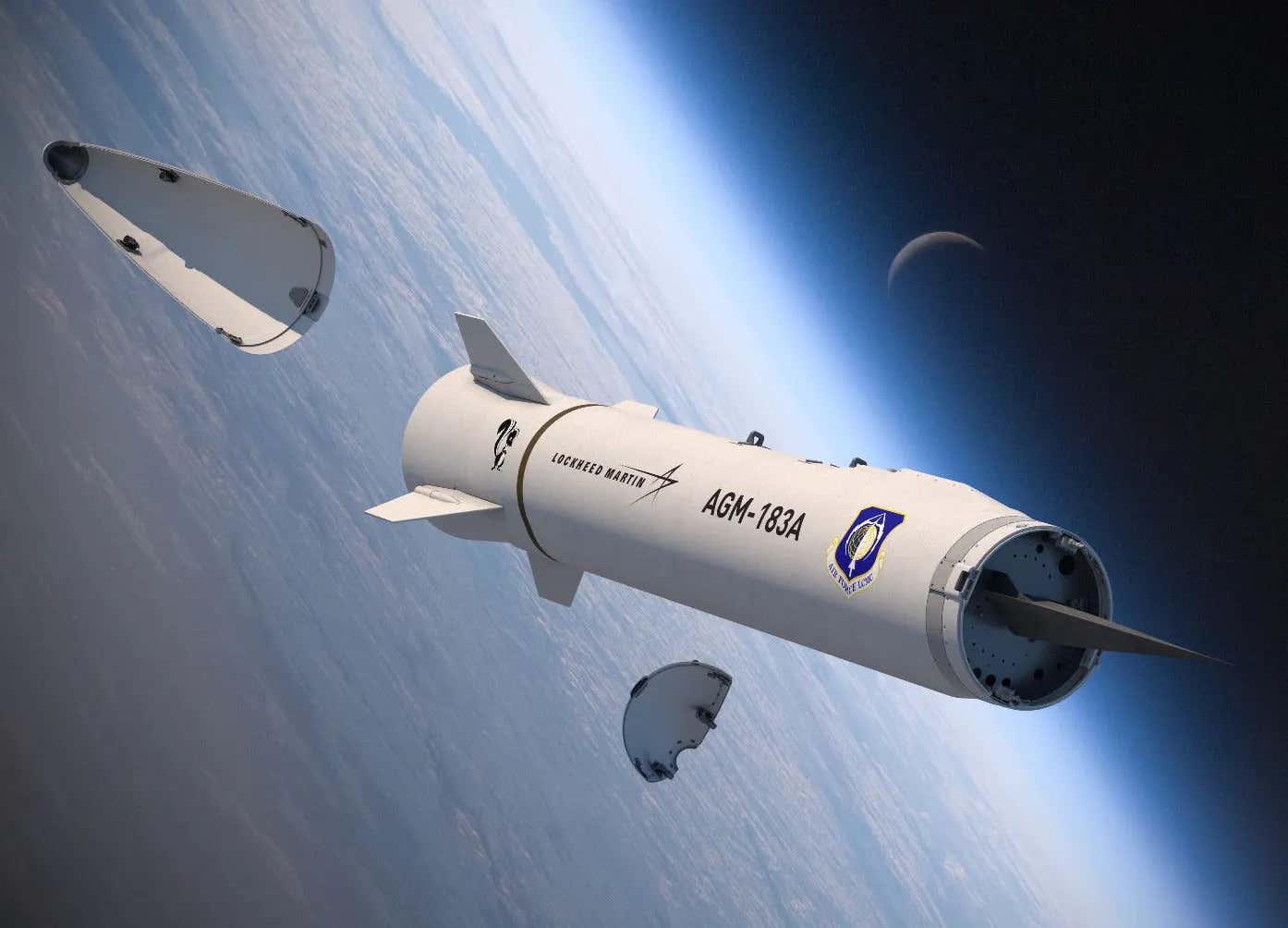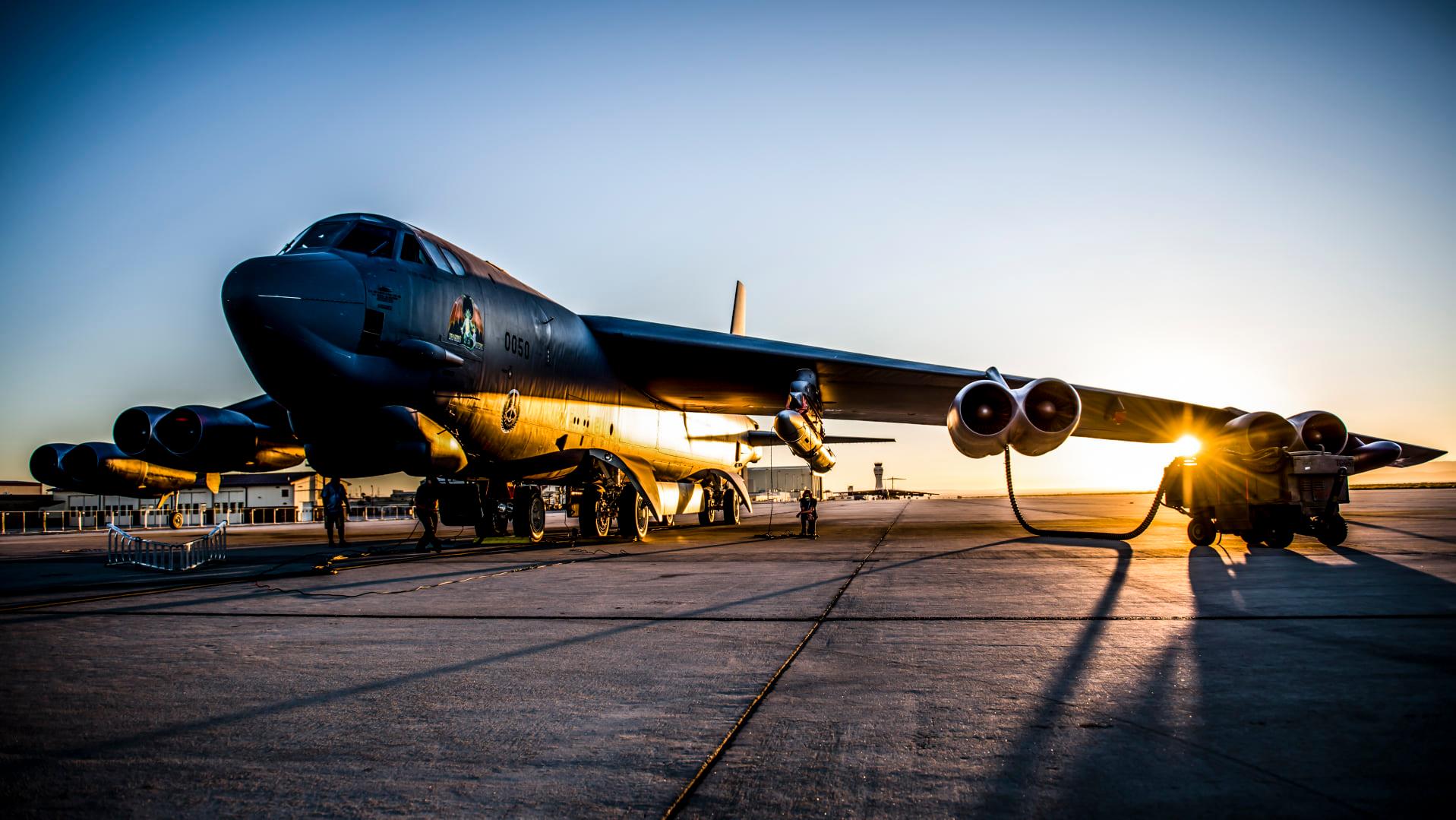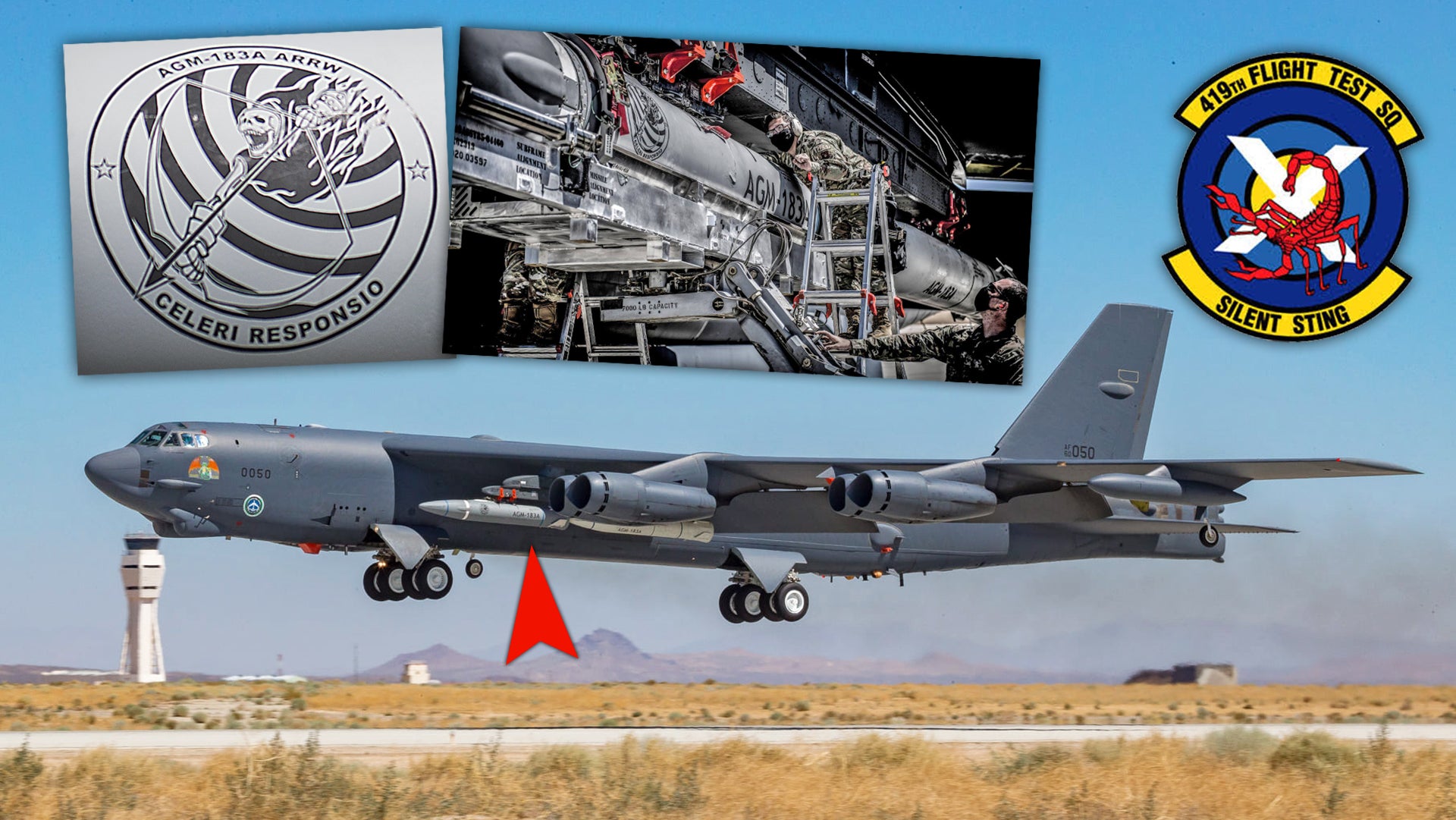The age of hypersonic combat is fast approaching. Case in point, an Edwards Air Force Base test B-52H Stratofortress just carried out its last captive carry test flight for the service’s new AGM-183 Air-launched Rapid Response Weapon (ARRW). The next phase will be actual test launches of the extreme-speed, air defenses-busting, tactical boost-glide hypersonic missile system.
The B-52 involved in the tests, 60-0050 “Dragon’s Inferno,” has been seen with increasingly elaborate modifications associated with the ARRW test program. These include a number of apertures for filming test launches, which are painted in customary day-glow orange that is a staple of the Air force’s flight test community. The aircraft has flown with a captive carry AGM-183 airframe on numerous occasions, but this is the first time we have seen the B-52 outfitted with a pair of the missiles, one of which appears to be more advanced than the previously seen test missile airframe and has a gray overall scheme.




The mission saw the B-52 do laps with a chase F-16 over the barren desert north of Edwards AFB before breaking off and heading out over the vast range complexes off the Southern California Coast.
Other captive carry test missions of new hypersonic missiles have not gone as smoothly in the past. During a similar mission for the Hypersonic Air-breathing Weapon Concept (HAWC), an air-breathing missile concept which has been shrouded in more secrecy than the boost-glide AGM-183, the missile fell off the B-52. Thankfully, nobody was hurt in the mishap, but it is a reminder that things can go seriously wrong even on a non-launch test mission of a new advanced missile capability.
Regardless, during the ARRW’s final captive carry mission, which a number of aircraft trackers, including our photo contributor Matt Hartman, were watching closely via publically available aircraft tracking apps, the Air Force tested the missile’s ability to communicate telemetry and GPS data to ground stations on the sprawling Point Mugu Sea Range. It served as a dry run of sorts for a test of ARRW’s booster later this year.

Lt. Col. Michael Jungquist, 419th Flight Test Squadron Commander and Global Power Bomber Combined Test Force Director stated the following in an Air Force release:
“The event this week demonstrated the ability to communicate with the prototype weapon; the entire team is excited to take the next step and begin energetic flight test of our first air-launched hypersonic weapons… These weapons will enable application of conventional firepower anywhere in the world at eye-watering speed.”



The idea behind ARRW is to push an air-launched hypersonic weapon capability from concept to reality as fast as possible in order to keep up with what has become an all-out hypersonic weapons race primarily between the U.S., China, and Russia. The Air Force is set to initially buy eight AGM-183s, four for testing and four for spares, some of which are likely to turn into the force’s very first operational hypersonic weapons if they all are not needed for the test effort.
It remains unclear what the range of ARRW will be or its top speed, but seeing as the system will benefit from being launched tens of thousands of feet in the air, with its ballistic missile-like booster getting it up to very high speed before releasing its glide vehicle payload, ranges well in excess of 1,000 miles have been discussed as have speeds that go far beyond the Mach 5 hypersonic threshold.

While the ARRW program is moving ahead, costs have soared by nearly 40 percent. Still, the Air Force seems to see the AGM-183 as a must succeed initiative so that it can add a hypersonic weapon into its quiver as quickly as possible. Doing so would not only offer a breakthrough capability, but it would give other more advanced hypersonic weapon concepts time to mature.
As it sits now, the Air Force could declare the AGM-183 operational by sometime in 2022 if everything goes as planned, and that is a very big if. Flight tests will prove just how mature this technology actually is. So, for better or worse, the Air Force and testers at Edwards AFB will learn relatively soon just how realistic their near-term hypersonic weapon dreams actually are.

Contact the author: Tyler@thedrive.com
